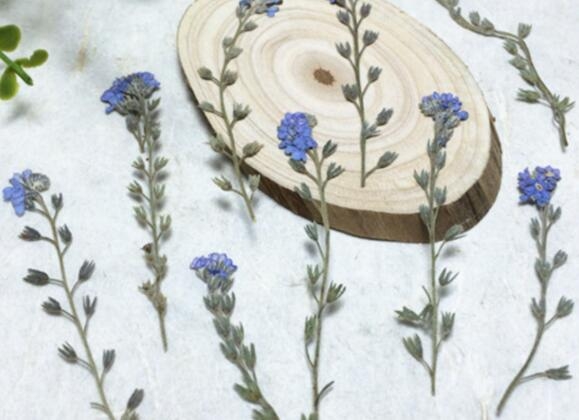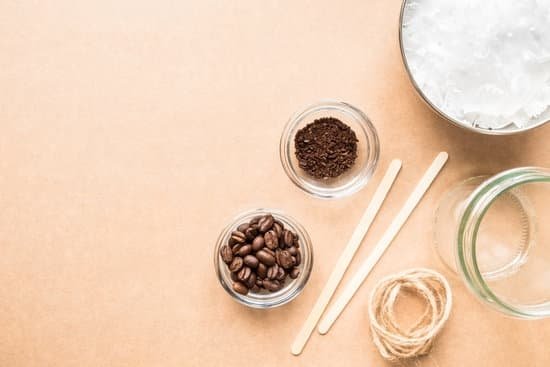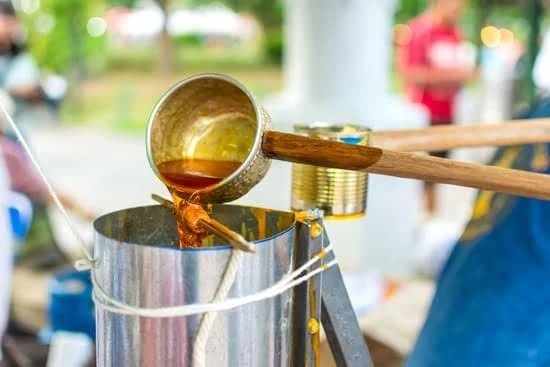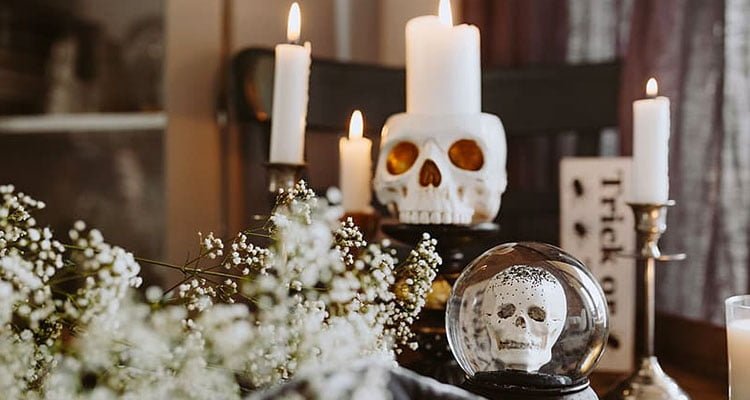Are you looking for a creative and fragrant way to enhance your home or workspace? Look no further than making candles with essential oils. The process of infusing candles with essential oils not only adds a delightful aroma but also brings a range of therapeutic benefits. In this article, we’ll explore the art and science of making candles with essential oils, from the benefits of using them to safety precautions when working with them.
Using essential oils in candle making offers numerous advantages, such as creating a natural and non-toxic alternative to traditional scented candles. We’ll delve into the various benefits of incorporating essential oils into your candle-making practice, whether you’re looking for relaxation, stress relief, or even an energy boost. Moreover, choosing the right essential oils is crucial in achieving your desired outcomes when making candles.
in addition to discussing the benefits of using essential oils in candle making, we’ll take a closer look at how to select the right essential oils for your specific needs and preferences. We’ll also provide you with a step-by-step guide on how to make candles with essential oils so you can create your own personalized and aromatic candles at home.
With our helpful tips and safety precautions, you’ll be well-equipped to embark on this creative and fulfilling journey into the world of candle making with essential oils.
The Benefits of Using Essential Oils in Candle Making
Using essential oils in candle making not only adds a pleasant aroma to your space, but also provides several benefits for your health and well-being. Essential oils are natural, aromatic compounds extracted from plants, and each oil offers unique properties that can enhance the overall experience of burning scented candles.
Therapeutic Benefits
One of the main benefits of using essential oils in candle making is their therapeutic properties. Certain essential oils, such as lavender and chamomile, are known for their calming and de-stressing effects, which can help promote relaxation and improve sleep quality. On the other hand, citrus oils like lemon and orange are invigorating and energizing, making them perfect for boosting mood and mental clarity.
Natural Air Fresheners
Unlike synthetic fragrances commonly used in commercial candles, essential oils are derived from plants and contain no harmful chemicals. This makes them a healthier alternative for scenting your home or workspace. Additionally, many essential oils have antibacterial and antiviral properties, serving as natural air fresheners that can help purify the air and eliminate odors.
Aromatherapy Benefits
Aromatherapy is the practice of using natural scents to stimulate the senses and promote well-being. By incorporating essential oils into candle making, you can create personalized aromatherapy blends tailored to address specific needs or preferences. Whether you’re seeking stress relief, increased focus, or a boost in energy, there’s an essential oil blend that can cater to your unique requirements.
By understanding the benefits of using essential oils in candle making, you can elevate your candle crafting experience while enjoying the therapeutic advantages these natural fragrances offer.
Choosing the Right Essential Oils for Candle Making
When it comes to choosing the right essential oils for candle making, there are a few key factors to consider. One of the most important things to keep in mind is the scent profile you want to achieve with your candles.
Some essential oils, such as lavender and chamomile, are known for their calming and relaxing properties, making them perfect for bedtime or meditation candles. On the other hand, citrus oils like lemon and orange can provide an invigorating and uplifting aroma that is great for creating a refreshing atmosphere in any room.
Another crucial consideration when choosing essential oils for candle making is their compatibility with the type of wax you are using. Different essential oils have varying flash points, which can affect how they perform when mixed with certain types of wax.
For example, soy wax has a lower melting point compared to paraffin wax, so it may not be suitable for certain essential oils with higher flash points. It’s important to do thorough research on the specific essential oils you plan to use and ensure that they will work well with your chosen wax base.
In addition to scent and compatibility with wax, it’s also important to consider the quality and purity of the essential oils you use in your candle making. Opting for high-quality, pure essential oils will not only result in a more aromatic and effective final product but will also ensure that you are getting all the potential benefits from the oils themselves.
This means seeking out reputable suppliers and checking for certifications or testing results that verify the purity of the essential oil products you purchase.
Finally, personal preference plays a crucial role in selecting essential oils for candle making. Whether you enjoy sweet floral scents, earthy aromas, or zesty citrus notes, there is a wide range of essential oils available to suit every taste and create unique blends that cater to individual preferences.
| Essential Oil | Best Use |
|---|---|
| Lavender | Calming and Relaxing Candles |
| Lemon | Uplifting and Refreshing Atmosphere Candles |
| Eucalyptus | Candles for Cold Relief or Aromatherapy |
Step-by-Step Guide to Making Candles With Essential Oils
Making candles with essential oils can be a rewarding and enjoyable experience. With the right materials and a little bit of creativity, you can create beautiful and aromatic candles that can elevate the ambiance of any space. Here is a simple step-by-step guide to get you started on making your own essential oil candles.
Gathering Your Materials
The first step in making candles with essential oils is to gather all the necessary materials. You will need wax, wicks, a double boiler, a thermometer, essential oils of your choice, a container for the candle, and any desired colorants or decorative elements. It’s important to use high-quality materials to ensure that your candles burn evenly and efficiently.
Melting the Wax
Once you have all your materials ready, it’s time to melt the wax. Using a double boiler, heat the wax until it reaches its melting point. It’s important to monitor the temperature using a thermometer to ensure that the wax does not overheat or catch fire.
Adding Essential Oils
After the wax has melted, it’s time to add essential oils to create a delightful aroma for your candle. The amount of essential oil you add will depend on personal preference and the strength of the fragrance. Typically, adding about 1 ounce of essential oil per pound of wax is sufficient, but this can vary based on individual tastes.
Following these basic steps will help you create your very own aromatic candles using essential oils. Experiment with different scents and combinations to find the perfect fragrance for your space.
Tips for Mixing and Blending Essential Oils for Candle Making
When it comes to making candles, essential oils can add a delightful and therapeutic aroma to your creations. However, the key to creating the perfect blend lies in effectively mixing and blending essential oils. Here are some tips to help you achieve the best results:
- Start with a plan: Before you begin mixing essential oils, it’s important to have a clear idea of the scent you want to achieve. Whether it’s a calming lavender, energizing citrus, or soothing vanilla, knowing your desired outcome will help guide your blending process.
- Understanding scent notes: Essential oils are categorized into top, middle, and base notes based on their volatility and evaporation rate. When blending, it’s crucial to include all three notes for a well-rounded scent profile.
- Experiment with ratios: The secret to a successful blend is finding the right balance between different essential oils. Start by combining small amounts of each oil and adjust the ratios until you achieve the desired aroma. Keep track of your experiments so that you can replicate successful blends in the future.
In addition to these tips, consider using complementary scents that work well together. For example, pairing floral notes like jasmine and rose with citrusy scents like bergamot can create a harmonious blend that is both uplifting and soothing. By being mindful of these tips and experimenting with various combinations, you can create unique and captivating aromas for your homemade candles.
Remember that everyone’s sense of smell is different, so don’t be afraid to trust your instincts when experimenting with different essential oil blends for candle making. With practice and patience, you’ll become an expert at creating custom scents that enhance the ambiance of any space.
Safety Precautions When Working With Essential Oils in Candle Making
Making candles with essential oils can be a fun and rewarding hobby, but it’s important to take safety precautions when working with these potent natural substances. Essential oils are highly concentrated liquids that can be flammable and may cause skin irritation or allergic reactions if not handled properly. Here are some safety tips to keep in mind when using essential oils in candle making:
1. Use protective gear: When handling essential oils, it’s important to protect your skin and eyes from potential irritation. Wear gloves and goggles to prevent direct contact with the oils, especially if you have sensitive skin.
2. Work in a well-ventilated area: Essential oils can release strong aromas that may be overwhelming in an enclosed space. To avoid respiratory discomfort, make sure to work in a room with good air circulation. Opening windows or using a fan can help disperse the scents.
3. Store essential oils safely: Keep your essential oils in a cool, dark place away from direct sunlight and heat sources. Proper storage will help maintain the quality of the oils and reduce the risk of oxidation.
4. Clean up spills immediately: Essential oils can leave behind stains and may damage certain surfaces, so it’s important to clean up any spills right away. Use a cloth or paper towel to blot the area and then clean with soap and water.
5. Keep essential oils away from pets and children: Some essential oils can be toxic if ingested, so it’s crucial to store them out of reach of curious pets and children.
Taking these safety precautions will help ensure that your experience of making candles with essential oils is enjoyable and hazard-free.
Creative Ways to Get the Most Out of Your Essential Oil Candles
When it comes to making candles with essential oils, the possibilities are endless. Not only do these candles provide a welcoming and relaxing atmosphere, but they also offer a variety of creative uses.
One way to get the most out of your essential oil candles is by using them as part of your self-care routine. Whether it’s during meditation, yoga, or a soothing bath, lighting an essential oil candle can enhance the experience and promote a sense of calm and well-being.
Another creative use for essential oil candles is as natural air fresheners. Instead of using synthetic air fresheners that may contain harmful chemicals, consider lighting an essential oil candle to naturally freshen up your home. Choose scents like lavender for relaxation, eucalyptus for a refreshing aroma, or citrus for an invigorating boost. Not only will your home smell wonderful, but you’ll also benefit from the therapeutic properties of the essential oils.
Furthermore, essential oil candles can be used to create a cozy ambiance during social gatherings or special occasions. Whether you’re hosting a dinner party or celebrating a special milestone, the warm glow and pleasant scent of an essential oil candle can elevate the overall mood and leave a lasting impression on your guests.
Overall, making candles with essential oils opens up a world of creative possibilities. From enhancing self-care routines to providing natural air freshening solutions and creating inviting atmospheres for social gatherings, these candles are truly versatile and beneficial in many ways.
| Creative Uses | Benefits |
|---|---|
| Enhancing self-care routines | Promotes relaxation and well-being |
| Natural air fresheners | Avoids harmful chemicals and provides therapeutic benefits |
| Creating cozy ambiances | Elevates mood during social gatherings or special occasions |
Conclusion
In conclusion, making candles with essential oils is both an art and a science. The process of choosing the right essential oils, blending them in the correct proportions, and safely incorporating them into candle-making requires a careful balance of creativity and precision. The benefits of using essential oils in candle making are numerous, from creating unique scents to enjoying their therapeutic properties.
When choosing essential oils for candle making, it’s important to consider not only the fragrance but also their potential therapeutic benefits. Whether you’re looking for a calming scent for relaxation or an invigorating aroma for energy, there are countless options to explore. Additionally, following a step-by-step guide and taking safety precautions when working with essential oils will ensure a successful and enjoyable candle-making experience.
Ultimately, creating your own essential oil candles allows you to personalize your space with beautiful scents that can also provide emotional and physical wellness benefits. With some creativity and experimentation, you can discover unique combinations of essential oils that elevate the ambiance of any room. Whether you’re a seasoned candle maker or just starting out, incorporating essential oils adds an extra layer of depth and enjoyment to this timeless craft.
Frequently Asked Questions
How Do You Make Candles With Essential Oils?
Making candles with essential oils requires melting the wax, adding the essential oils, and pouring the mixture into candle molds. It’s important to carefully measure the amount of essential oil to be added to the melted wax.
What Is the Ratio of Essential Oils to Wax for Candles?
The ratio of essential oils to wax for candles typically ranges from 6-10% per pound of wax. This means that for every pound of wax used, you would add 0.96-1.6 ounces of essential oils.
Why Not to Use Essential Oils in Candles?
Using certain essential oils in candles can be dangerous as they have a low flash point and can pose a fire hazard when heated. Additionally, some essential oils may not mix well with the candle wax and can create an uneven burn or unpleasant scent when burning.

Welcome to my candle making blog! In this blog, I will be sharing my tips and tricks for making candles. I will also be sharing some of my favorite recipes.





